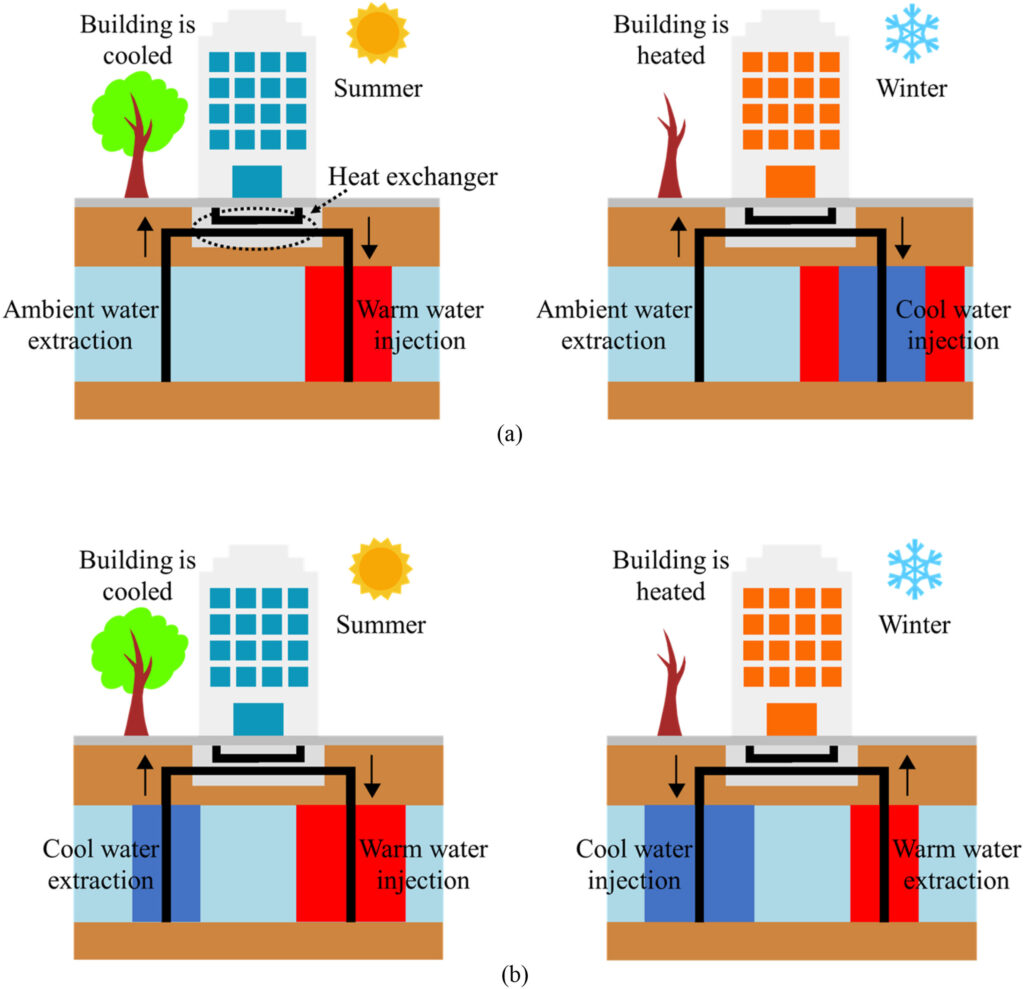Researchers have developed a fast and accurate model to improve Aquifer Thermal Energy Storage (ATES) systems in buildings, helping to balance seasonal energy demand and supply. The model uses temperature response functions and machine learning to predict thermal changes in aquifers during hot and cold water storage cycles. Tested against detailed simulations, it showed errors of only 3% for energy storage estimates and 1% for thermal impact zones. With its speed and accuracy, the model can support building system design and city-wide energy planning, making ATES systems more efficient and practical.

Figure 1. Operations of (a) the unidirectional and (b) the bidirectional ATES systems in summer and winter
Machine-learning-assisted long-term G functions for bidirectional aquifer thermal energy storage system operation
Kecheng Chen, Xiang Sun, Kenichi Soga, Peter S. Nico, Patrick F. Dobson